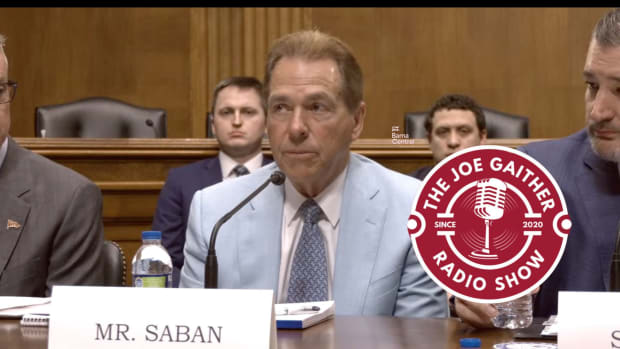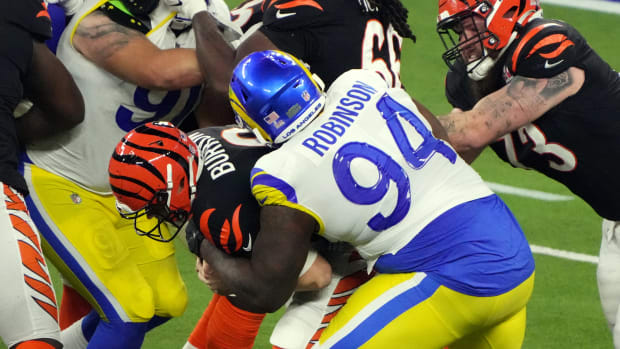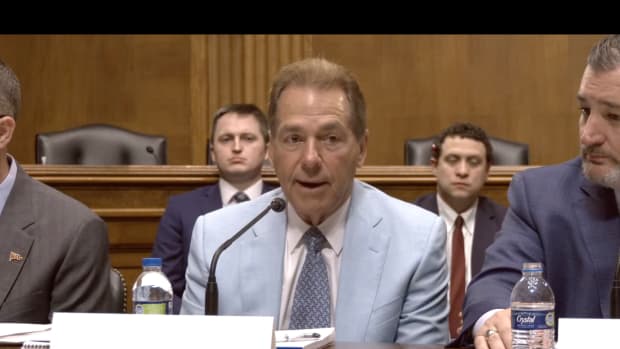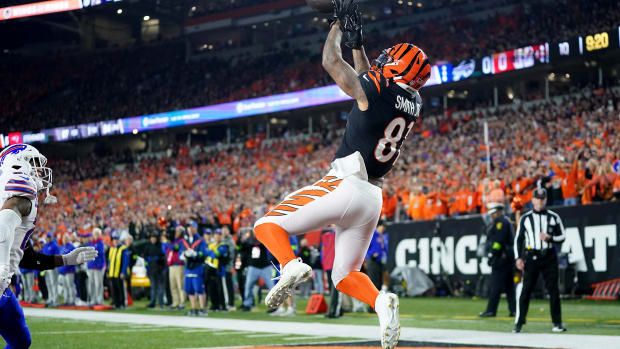A Special Crimson Tikes: Style Over Substance
Happy Fourth of July everyone. Please check out the added note from Anthony Sisco after the cartoon:
“Has anybody seen the bridge?”
Recently a good friend was congratulating me on the success that Crimson Tikes was having and in an almost off handed, thinking-out-loud kind of way, he remarked that my cartoons reminded him of Peanuts and Calvin and Hobbes. I was flattered and acknowledged that Charles Schulz, the creator of Peanuts, was my primary inspiration, and he has clearly made a big impact on my style. Although any similarities are a faint echo of the genius of Schulz, his observation did make me chuckle.
Bill Watterson, creator of Calvin and Hobbes, stated in a tribute to Schulz that his cartoons have been “universally imitated” and “One can scarcely overstate the importance and influence” his strip had on “all the cartoonist that followed. “ In fact, cast about in the thousands of cartoons that I have authored since exploring this passion, you will find what I call Schulz Samples. These cartoons are an acknowledgement and small gesture of honor toward the major influences in my young life inflicted on me by Mr. Schultz! There are a few replicas of characters and ideas in early works that Schulz drew prior to his Peanut’s strip going nuclear.
In my early days, I copied and drew Snoopy, Charlie Brown, Linus and occasionally Lucy countless times. There was something about those round-headed little folks that stirred affection within me. Today, as I draw my various cartoons, I will borrow some of Schulz’s pre-Peanuts characters, or a similar version. The punch lines might be different, but the artistic lines, clothing, shading and gestures are my feeble attempt to salute Schulz and bring him to a new audience that didn’t grow up with him.
Which brings us to these two little no named guys (Cartoon posted above). They have shown up in different variations through the years. Originally drawn somewhere around the late 1940s, these “Li’L Folks” as Schulz liked to call them, embodied the design, style and humor that somehow mesmerized me as a young boy and ignited a deep sense that there is a strong desire inside the human race to laugh, love and try to make sense out of this quirky world we live in. In an age where social media has covered the land like kudzu, choking our lives with anti-social comments and political rancor, resurrecting Schulz seemed the right way for me to go.
In my own efforts, armed only with Black Cat India ink and an eye for the incongruences’ that make up the atoms of humor, Crimson Tikes is a covert operation intended to draw us back to finding the good in life. Sprinkled with spiritual insights and philosophical musings The Crimson Tikes series is all about the lighter side of America.
And that is where my friend’s off-the-cuff remark and all this time we have due to the COVID-19 quarantine, lent me the opportunity to ruminate on the MULTIPLE influences that really do make up Crimson Tikes. Many friends and well-wishers have advised me against the myopic view that Crimson Tikes has taken. “You have such a limited audience if your primary focus is on Alabama fans. Why don’t you at least include the whole SEC?” Granted, Crimson Tikes is primarily a cartoon that provides an ongoing chronicle of the zest and zeal embedded deep in the DNA of the Alabama faithful, the Crimson Tide football team and the coaches, but its roots draw from many more founts of blessing.
As has been rightfully acknowledged somewhere, we all stand on the shoulders of giants. History is replete with heroes. Infinitely above and beyond you have Jesus and then, trailing not too far behind in the hearts of the Alabama devotees is Bear Bryant, Nick Saban, and Joe Namath. (In fact, whenever Alabama might lose during the eras of Bryant or Saban, we relied even more heavily on the Son of God.) However, the legend and lore that surrounds just these three is enough to build a year’s worth of humor. Throw in Title Town Tuscaloosa with the magical aura that hangs in its air and you have a fertile field to explore many facets of this mighty village. A place, mind you, that even a F5 tornado couldn’t defeat. In fact, they mourned the experience, swept up the debris, won a national championship the same year and had a renaissance in building over the scar from the storm.
The place is special.
After that, it’s easy to imagine that everyone from George Washington, Elvis Presley, Johnny Cash, Elton John, Led Zeppelin, Einstein, David Bowie, etc., etc., all the way back to Wooly mammoths, have blown across the mythical banks of the Black Warrior River. (Elvis, Elton and Led Zep actually did play at the Coliseum in the 70s). These former icons make the cartoon scene randomly. The university's recent motto, “Where Legends are Made”, though harkening to the pantheon of legends from the distant past, is not a clever marketing ploy that rings hollow. It is backed up with the likes of contemporary heroes like Tua Tagovailoa, Jalen Hurts and all the various players and coaches that make up the multiple national championships from the 2009 team forward. Mix in Li’L AL, Big AL, Helmet Head Henry, Punt, Jeudy, Victoria, Sheri Baby, various farm animals and many more and the gumbo is starting to get rich.
Which brings me back round to the title of this article and one final word on inspiration, sampling and giving credit where credit is due? I strongly believe in all three. Everyone and everybody have their mentors and heroes that have influenced their lives. It’s impossible to parse them out. But it goes both ways. Even the great draw from the unknown in a myriad of ways and in a symbiotic manner.
Previously mentioned Led Zeppelin, has spent the last decade fighting off lesser known groups that have made the claim that their particular riffs were sampled from them. (i.e. LZ’s “The Crunge” is a clear sample/tribute to James Brown’s Sex Machine as evidenced by the riffs and even Brown asking if he could take us to “the bridge.” Plant famously asked in their version “Has anybody seen the bridge?” with Page ending it with “Where’s that confounded bridge?”)
But not everyone is on board with all of this sharing, camaraderie and good will. Roger Friedman, writer and critic for ShowBiz 411, wrote, “The group’s catalog is well known for being purloined from Muddy Waters, Howlin’ Wolf, Robert Johnson and so on.” But someone commenting on Friedman’s article referenced Muddy Water’s views on the subject and quoted Waters as saying, ““All musicians are thieves. The good ones make it fresh and the great ones take it somewhere new.” It has always been customary and understood amongst the blues bands that they were in a community of composers and musicians that were sharing and improving music for mankind. And the elite’ brought it to the masses.
Common among cartoonist has been the occasional inclusion of their heroes within their strips. Watterson did it with Schulz. Schulz did it with his WWII wartime cartoon correspondent, Bill Mauldin and I hope to keep the tradition alive through Crimson Tikes; to honor and bring forward the best of what has been said and done and keep it alive. Ultimately, to restore unto us the light and the best of what mankind stands for. Or as Robert Plant once said, “In the Light you will find the road.”
Thank you. Thank you very much (Elvis Presley)
Anthony Sisco





